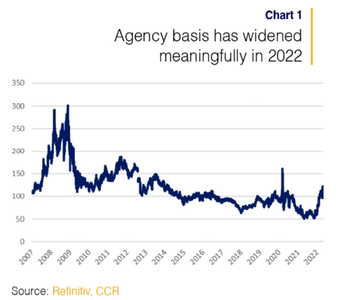Today marks the beginning of Quantitative Tightening and we've been holding Mr. Grice in reserve for this moment. First though, some history and a question:
Why has the U.S. Federal Reserve been buying Mortgage Backed Securities?
I understand QE1 which commenced in November 2008 at the rate of $100 billion of Agency paper per month, continuing until Spring 2010 for a total of $1.7 trillion.
At that time no one knew what was inside those MBS wrappers and wouldn't touch them. Had the Fed not stepped up the mortgage business and thus the housing market would have frozen and a very deep depression would have been unstoppable. Additionally QE1 allowed the banks to offload their trash, strengthen their balance sheets and increase their lending capacity.
I almost understand QE2 which started in November 2010 with the Fed changing instruments to U.S. Treasury paper at the rate of $85 billion per month. This lasted for seven months as the banks sold treasuries, took the cash proceeds of the sales and parked them at the Fed, further reliquifying their balance sheets and giving them an absolutely risk-free profit.
Complacency in financial markets has given way to concern that the Federal Reserve will have to provoke a hard downturn to defeat inflation.
The complacency around inflation pricing remains unresolved. For all the ridicule that central bankers are currently taking from politicians and the press for having predicted that pandemic inflation would be transitory, long-term inflation markets steadfastly continue to predict exactly that.
The likelihood, however, is that inflation will be a problem for the next cycle. If long-term inflation expectations could remain ‹well anchored› as inflation was breaking forty-year records, we doubt they’ll become suddenly unanchored as base effects and a weakening economy push it back down over the coming months.
The complacency in broader risk markets, in contrast, which we documented towards the end of last year, has now largely given way to a growing concern about how much the coming slowdown is going to hurt. As we’ll explain below, we suspect it will be a lot (big party, big hangover), which is why we think it’s too early to be aggressive buyers notwithstanding statistical cheapness emerging in some areas.
We’ll start by running through the areas we had been highlighting as being illustrative of the market’s voracious risk appetite, but which today are beginning to send a more cautious message. We’ll also explain why we see the recent swift and spectacular response of the US housing market to higher mortgage rates as a potentially ominous metaphor for the rest of the economy. Finally, we’ll close by gazing a little further out, venturing beyond the coming slowdown to offer some ideas on what shape the next recovery might take.
US housing as a metaphor for broader asset marketsThe best place to buy cheap convexity last year was in the US mortgage market, where agency bonds were trading at historic nominal tights to Treasuries. As a reminder, mortgage borrowers are implicitly long an option to refinance their loan should interest rates fall, which means that agency bond holders are short that option, which is ‹embedded› in the bond price. As a result, agency bonds are ‹negatively convex› (if interest rates rise, agency bond prices fall; if interest rates fall, agency bond prices rise a bit, but not by as much… and eventually fall).
As we showed in November of last year, by shorting agency bonds against Treasuries, investors could get long that convexity very cheaply (possibly even for free when taking account of the option hedge).
That is now beginning to play out. Chart 1 shows the spread between agencies and Treasuries has materially widened in light of the Fed’s more aggressive Quantitative Tightening plans

Ironically, this widening in agencies has happened just as the refinancing boom has stalled, making the option that agency holders are short of worth far less (Fed purchases are a larger driver of agency pricing than the embedded option).
As the top panel in Chart 2 shows, the primary fixed mortgage rate in the US has risen to about 5.5%, leaving as much as 95% of the current stock of residential mortgages ‹out of the money›, according to some estimates we’ve seen....
....MUCH MORE